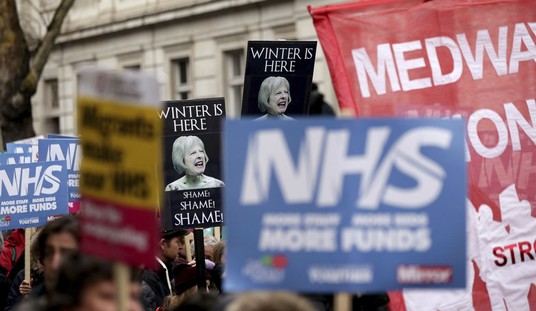In the 55 years that Gallup has been tracking “government” as an option when it asks what the most important problem facing the country is, not once had the share who gave that answer reached 35 percent. Not during Watergate, not during the Reagan-era backlash to big government, not during the tea-party fad. Never.
Five years ago a younger, more naive me would have treated this as evidence that Americans want to shrink the federal leviathan. Wrong, wrong, wrong, wrong, wrong.

Amazing. Consider all of the recent history that graph covers — the public’s turn against the Iraq war, the financial-sector bailout after the market crash, Obama’s election, ObamaCare, Congress changing hands twice, the rise of Trump. Never through all that did the average percentage listing government as the country’s most pressing problem crack 22 percent, let alone touch the 32 percent we’re at now. How could that be given the anti-government fever of the tea-party years?
Simple, says Gallup. The “problems” people think of when they complain about government have to do with its ability to function, not its size: “Roughly half of Republicans, Democrats and independents who say the government is the most important problem point to gridlock, lack of bipartisanship, both parties or other general concerns about the way government is operating.” Follow the link and eyeball the third graph, which shows the percentage of Democrats, Republicans, and independents since February of last year who think government is the country’s biggest problem. Given the continued growth in spending, you might expect Republican discontent to at least match that of Democrats. Nope. The share of Dems has exceeded the share of Republicans in each of the past 12 months, sometimes doubling the percentage of the “small-government party.” (Independents have frequently, although not always, rated government as the most important problem more than Republicans have as well.) Only this month have the two parties reached near-parity, and it’s easy to see why. The shutdown has embittered both sides, with righties suddenly furious at the new Democratic roadblock to Trump’s agenda in Congress.
What’s driving the current historic discontent with government, in other words, isn’t government doing too much but government briefly doing too little. What the graph above really shows, I think, is the growth of hyper-partisanship over time, such that gridlock and temporary paralysis over the wall momentarily left frustration with government superheated. Dems hate Trump, Republicans hate Pelosi and the Democratic House, and so the feeling that government is our biggest problem skyrockets. In fact, before now, only once before since 2001 did the share of the public that feels that way crack 30 percent. That was … during the 2013 shutdown.
You’re left to wonder what would happen to these numbers if Trump suddenly resorted to his pre-2015 political identity of a centrist dealmaker. If he huddled with Pelosi and Schumer and agreed to $2.2 trillion in infrastructure spending, say — an amount equivalent to 10 percent of the national debt — is there any doubt that the overall share of Americans that believes government is the most important problem would go down? Is there much doubt that it would drop even among Republicans? Really what we’re looking at in Gallup’s data is a pithy explanation of how Trump won the presidency in the first place. If Republicans believed government was America’s most pressing problem for the same reasons Reagan did, he never would have been nominated. But they don’t. So he was.








Join the conversation as a VIP Member